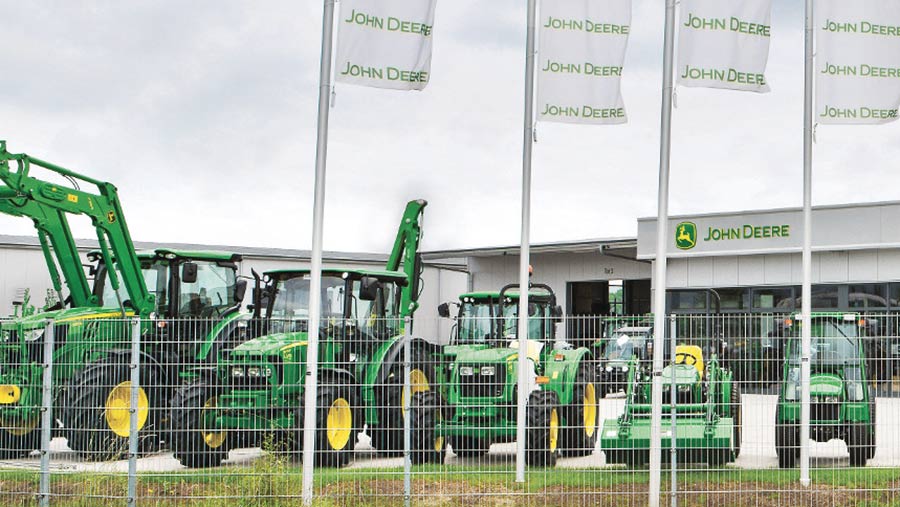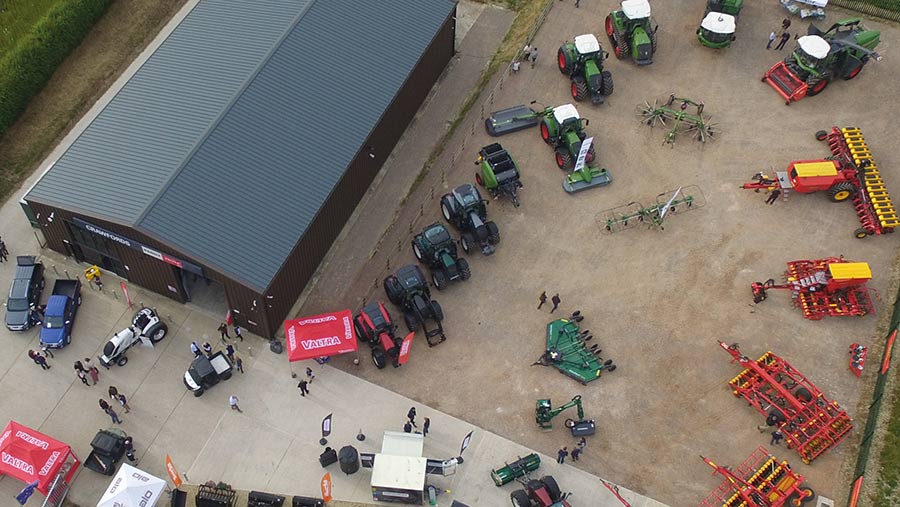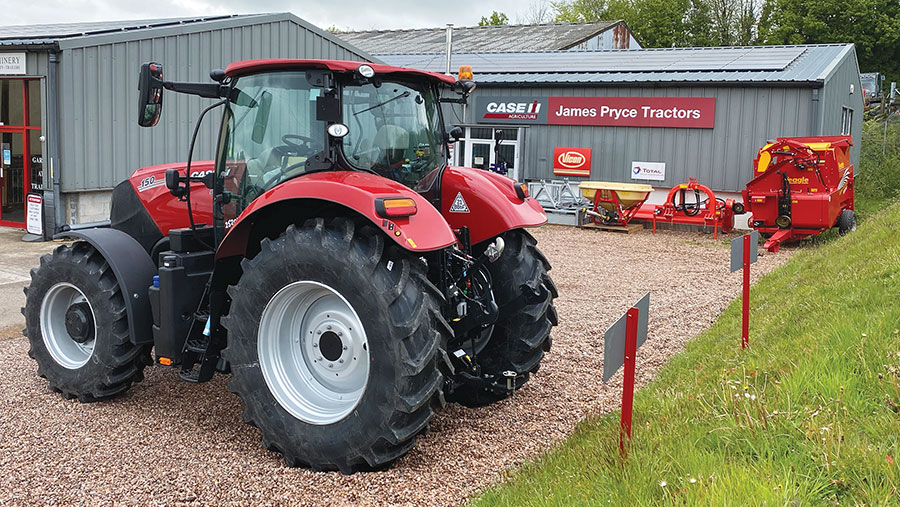Sweeping changes shake up the farm kit dealer landscape
 © John Deere
© John Deere Agricultural machinery dealers are the fundamental link between the shiny corporate world of the manufacturers and the gritty realities of farming.
Without them, equipment has no easy route to farm and, crucially, no servicing or spare parts backup to keep it going once it gets there.
Dealers that get the formula right garner loyal groups of customers and if they are compelled or coerced into switching brands, the customers will move with them, even if it means saying goodbye to their preferred machines.
Manufacturers are well aware of this, but corporate shake-ups and ambitious sales targets can put relationships under strain.
Good dealer performance can also get overlooked when the wheels of a major restructuring programme start rolling.
See also: Tractors: where are they made?
John Deere has been particularly aggressive in this regard, with a major revamp taking place over the past decade, but all manufacturers have seen change of one sort or another over the past 10 years.
For the larger brands, part of the reason for seeking bigger multi-outlet dealers is that they have the skills, finances and infrastructure to support today’s hugely complex and expensive machines.
Expecting a small family dealer to have the staff and equipment to sell and service a sprawling range of 50hp to 600hp tractors, foragers and combines, all dripping in precision farming technology, is a tall order.
The downside is that these super dealers can run the risk of losing the personal service and reassurance customers get from speaking with the same sales or service person they’ve dealt with for years.
Where smaller dealers have been pushed out by the big brands, it has brought opportunities for manufacturers with lower market share.
This has seen makers such as Case IH and Kubota step into former John Deere sites, in turn opening up expansion options for smaller players like Deutz-Fahr and McCormick.
In this article we take a look at how the dealer networks of the largest agricultural groups – John Deere, CNH and Agco – have changed over the past decade.
John Deere
In the 80s, 90s and early 2000s, John Deere had a relatively stable dealer network, primarily made up of family outfits with one or two depots, plus the odd larger group having four to six. In total, it had roughly 130 branches covering the UK and Ireland.
However, after the launch of its controversial Dealer of Tomorrow strategy in 2011, the landscape started to change dramatically.
Some dealers were forced to amalgamate in order to meet targets, while others were swallowed up by larger organisations. It didn’t stop there either, with a number of the groups formed in the early days of the strategy seeing further consolidation in recent years.
A good example is the Hunt Forest Group that now covers much of the mid-south of England.
It was formed in 2019 after R Hunt and New Forest Farm Machinery joined forces, and in 2021 it absorbed C Smart Agricultural Services, which originally merged with Ashworth Farm Machinery.
It now has five ag depots stretching from the Isle of Wight in the South; Yeovil, Somerset in the West; and Hook, Hampshire in the East.
The original big dealer organisations have also seen further expansion, buying out smaller outfits and adding new depots to plug any gaps that have arisen as a consequence of the reshuffle.
Tuckwells has recently taken on Burden Bros in Kent, making it the second-largest network with 10 dealer outlets.
But Ripon Farm Services is JD’s biggest, with 11 branches covering the whole of Yorkshire and spilling into Nottinghamshire, Lincolnshire and County Durham.
It reached this lofty number of outlets after acquiring RBM in 2019.
On the whole, the restructuring process appears to have played out as Deere planned, but its heavy hand has caused it to lose a couple of high-profile outfits.
In 2020, negotiations broke down with prominent east-of-England dealer Sharmans and HRN in Scotland, which have since been snapped up by Case-IH and Kubota, respectively.
The loss of five Sharmans depots has been plugged by Ben Burgess and Farol – which have added branches in Oakham, Rutland; and Newark, Lincolnshire – while HRN’s patch has been filled by expansion of Netherton Tractors’ operation.
All of this upheaval has resulted in the current agricultural dealer network being controlled by just 29 dealer groups.
Together they have 105 branches, compared with 118 for all of the Agco brands and about 190 for CNH.
Deere won’t reveal how much further restructuring is in the pipeline, but undoubtably there will be more change to come.
CNH
Both brands in the CNH stable operate largely separate dealer networks and each manages them on an individual basis rather than employing immutable targets across the board.
This means there is still a blend of larger dealer groups and single-branch outfits, as well as some opportunities for new businesses to come into the fold.
The general trend is for CNH to seek a greater deal of differentiation between the two brands.
This is largely because the tractors are based on the same platform and they directly compete with one another, making it tough for a dealer to represent both fairly.
As a result, there are just four groups that deal in both brands and almost all have separate depots for New Holland and Case IH.
However, Pecks AgriTrac at Spalding bucks the trend with red and blue machines on the forecourt.
The largest joint dealer is Ernest Doe, which covers the South East and East Anglia with 10 dedicated New Holland branches and eight for Case, which are branded Ernest Doe Power.
Over the past decade, both brands have seen changes to their network, but compared with John Deere’s overhaul it has been a relatively uneventful time for most.
New Holland has seen a slight reduction in its total dealer count and a rise in the number of outlets, while Case’s dealer number has remained fairly static, albeit with an increase in the number of depots.
However, that figure does hide a few significant comings and goings.

Crawfords Sussex depot © Crawfords
New Holland
New Holland has the broadest network of the two brands and, at the latest tally, it had 39 UK dealers with a total of 117 branches. That compares with 46 dealers and 110 outlets in 2011.
Many of these have been around since the Ford days, but there have been some notable additions, such as the appointment of Burdens Group late in 2011 after it lost its John Deere franchise.
Other changes include the formation of new Shropshire-based dealer Severn Farm Machinery in 2017, and the expansion of TH White to take over JG Plant’s Hereford depot after the firm went into administration.
Recently, there has been some upset in the Irish market after the firm dropped key dealer WR Shaw.
Case IH
Case has also seen gradual change over the past decade after a significant expansion between 2006 and 2009.
This was largely because the firm needed to make up for the dealers it lost after the merger with New Holland in 1999.
At its lowest, the total number of UK branches dropped to about 55, with large gaps in the west of England. But by 2011, this had increased to 68 outlets run by 44 dealers.
The firm now has 45 dealers, but the appointment of some larger enterprises has bumped the number of branches up to 74.
This includes a couple of former John Deere dealers, with Sharmans adding six outlets in the east of England and Cornwall Farm Machinery bringing two in the South West.
Northumberland-based Everitt and Marshall also moved over from Deere in 2017.

Case IH has stuck with a blend of larger dealer groups and single-branch outfits © MAG/Oliver Mark
The arrivals have pushed out some existing dealers, such as Collings Brothers, whose Cambridgeshire and Northamptonshire branches have now moved to Deutz-Fahr.
Case has also taken on brand-new dealers, such as Pontesbury tractors in Shropshire, which was formed in 2012. Notable arrivals for 2020-21 include John Day in Berkshire/Oxfordshire, which lost Kubota due the Lister Wilder/Chandlers change.
Davidson Tractors in south-west Scotland joined too, having formerly represented Massey Ferguson , as did AL Agri near Forfar and PGF in Anglesey – both previously McCormick dealers.
The current network means customers are generally no more than 45-60 minutes from a branch, but the firm is still looking to add more dealers to fully cover the UK and Ireland.
It says it has no plans to end the dual-brand system.
Agco
Since the Challenger brand has been brought into the Fendt fold, Agco has been working hard to define the market for each of its three marques.
Its so-called Route 66 strategy is working to clearly separate Fendt and Massey Ferguson, giving each a full line of machinery, from mowers, rakes and balers to tractors and combine harvesters. Valtra is being treated slightly differently and is remaining a tractor-only brand in the UK.
This has resulted in a significant shake-up of the network and a phasing-out of larger outfits that sold all brands of machine.
Now, dealers are broadly being categorised into dedicated Massey Ferguson, Fendt and Valtra businesses, with some selling both Fendt and Valtra.
This is because the two give a broad coverage from simple, entry-level loader tractors to high-powered crawlers, forage harvesters and combines, without too many overlaps.
A good example comes from the north of England/Scottish Borders, where Carrs Billington lost the Fendt product range to Valtra dealer Johnston Tractors in 2020, making it Massey Ferguson only, but covering an extended territory.
These changes have also coincided with a redistribution of the areas covered by these dealers, with some expected to set up new depots.
A considerable amount of streamlining has taken place too, with the group’s 101-strong dealer network in 2011 being whittled down to just 50.
Losses include well-known dealerships such as Lister Wilder, which decided to relinquish its franchise to Chandlers and concentrate solely on Kubota.
The formation of some larger dealer groups means the drop in the number of branches is less extreme – 150 vs 118 – and according to the group, coverage is far better distributed, particularly for Valtra.
At the current standing, there are 29 Massey Ferguson dealers with 74 branches, 23 Fendt dealers with 53 branches and 26 Valtra dealers with 52 outlets.
Interestingly, roughly half of the Massey Ferguson dealerships still represent another of the group’s brands, so some more consolidation is likely to come.
Agco also still has a couple of gaps to fill, with no Fendt dealer in south Wales, and Valtra under-represented in Northern Ireland.

